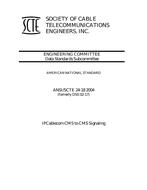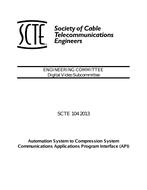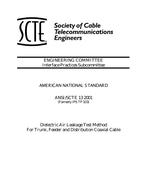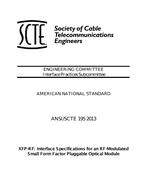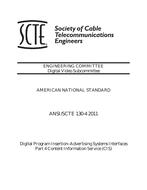This document describes the IPCablecom Call Management Server (CMS) to CMS Signaling protocol intended for useby a CMS to communicate with another CMS in order to support packet-based voice and other real-time multimediaapplications. The protocol exchanges between a CMS and a Media Gateway Controller (MGC) are identical to thosebetween CMSes, and so for purposes of this specification the MGC is considered identical to a CMS. CMSes currentlysupport multimedia endpoints (within the IPCablecom infrastructure) that use the Network-based Call Signaling [5](NCS) protocol and the PSTN Gateway Call Signaling Protocol [6] (TGCP) for communicating signaling informationbetween the endpoint and the CMS. In the future, other protocols may be supported as well, and the CMS to CMSprotocol is intended to be sufficiently general to accommodate such protocols without change.The CMS to CMS protocol uses the Session Initiation Protocol 2.0 (SIP) specification with extensions and usage rulesthat support commonly available local and CLASSSM services. This protocol is referred to as the Call ManagementServer Signaling (CMSS) protocol.The CMSS protocol takes into account the need to manage access to network resources and account for resource usage.The usage rules defined in this specification specifically address the coordination between CMS Signaling andIPCablecom Dynamic Quality of Service (QoS) mechanisms for managing resources over the cable access network. Inaddition, this specification defines the protocols and messages needed between Call Management Servers for supportingthese services.This document specifies the protocols and procedures to use between CMSes belonging to a single service provider aswell as between CMSes that belong to different service providers. In the case that the CMSes are owned by multipleservice providers, it is assumed that the service providers have a mutual trust relationship.Other IPCablecom documents describe interfaces between other system elements. These documents cover areas such as:Event Message recording for billing and other back office functions [3]; Dynamic Quality of Service [4]; Operationsand Provisioning [28]; Electronic Surveillance [24]; and Security [2]. These other specifications indirectly placerequirements on the signaling protocol to ensure that it transports the correct data needed to implement a completesystem. This document includes syntax and protocols for implementing these requirements. Currently, the documentdoes not address interworking with non-IPCablecom-compliant devices.

